10 chart patterns every trader needs to know
Forex chart patterns, which include the head and shoulders as well as triangles, provide entries, stops and profit targets in a pattern that can be easily seen. The engulfing candlestick pattern provides insight into trend reversal and potential participation in that trend with a defined entry and stop level. Some of them are mentioned below:
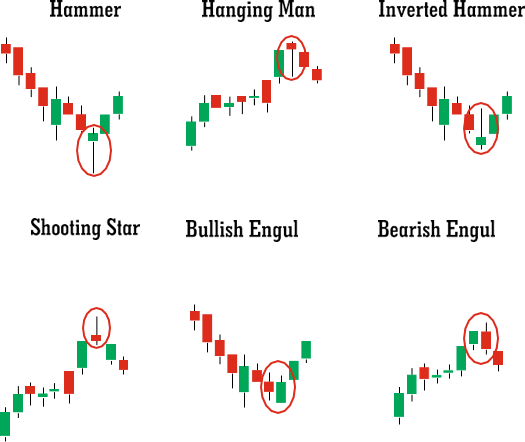
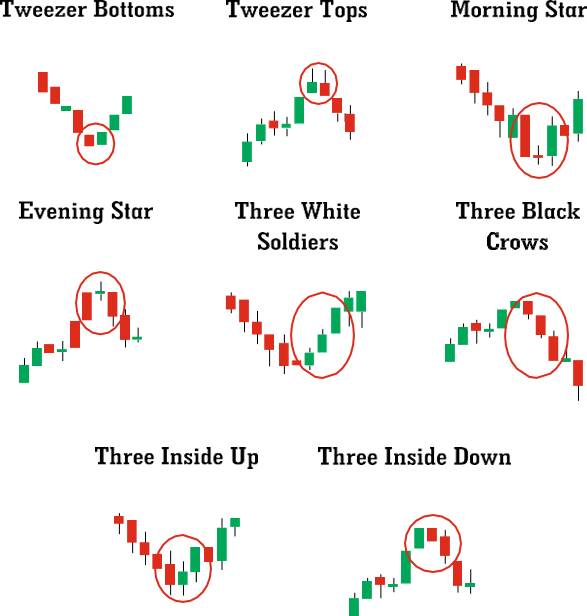
There is no one ‘best’ chart pattern, because they are all used
to highlight different trends in a huge variety of markets. Often, chart
patterns are used in candlestick trading, which makes it slightly easier to see
the previous opens and closes of the market.
Some patterns are more suited to a volatile market, while others are less so.
Some patterns are best used in a bullish market, and others are best used when a
market is bearish.
That being said, it is important to know the ‘best’ chart pattern for your
particular market, as using the wrong one or not knowing which one to use may
cause you to miss out on an opportunity to profit.
Before getting into the intricacies of different chart patterns, it is important
that we briefly explain support and resistance levels. Support refers to the
level at which an asset’s price stops falling and bounces back up. Resistance is
where the price usually stops rising and dips back down.
The reason levels of support and resistance appear is because of the balance
between buyers and sellers – or demand and supply. When there are more buyers
than sellers in a market (or more demand than supply), the price tends to rise.
When there are more sellers than buyers (more supply than demand), the price
usually falls.
As an example, an asset’s price might be rising because demand is outstripping
supply. However, the price will eventually reach the maximum that buyers are
willing to pay, and demand will decrease at that price level. At this point,
buyers might decide to close their positions.
This creates resistance, and the price starts to fall toward a level of support
as supply begins to outstrip demand as more and more buyers close their
positions. Once an asset’s price falls enough, buyers might buy back into the
market because the price is now more acceptable – creating a level of support
where supply and demand begin to equal out.
If the increased buying continues, it will drive the price back up towards a
level of resistance as demand begins to increase relative to supply. Once a
price breaks through a level of resistance, it may become a level of support.
Types of chart patterns
Chart patterns fall broadly into three categories: continuation patterns, reversal patterns and bilateral patterns.- A continuation signals that an ongoing trend will continue
- Reversal chart patterns indicate that a trend may be about to change direction
- Bilateral chart patterns let traders know that the price could move either way – meaning the market is highly volatile
For all of these patterns, you can take a position with CFDs. This is because CFDs enable you to go short as well as long – meaning you can speculate on markets falling as well as rising. You may wish to go short during a bearish reversal or continuation, or long during a bullish reversal or continuation – whether you do so depends on the pattern and the market analysis that you have carried out.
The most important thing to remember when using chart patterns as part of your technical analysis, is that they are not a guarantee that a market will move in that predicted direction – they are merely an indication of what might happen to an asset’s price.
Head and shoulders is a chart pattern in which a large peak has a slightly
smaller peak on either side of it. Traders look at head and shoulders patterns
to predict a bullish-to-bearish reversal.
Typically, the first and third peak will be smaller than the second, but they
will all fall back to the same level of support, otherwise known as the
‘neckline’. Once the third peak has fallen back to the level of support, it is
likely that it will breakout into a bearish downtrend.
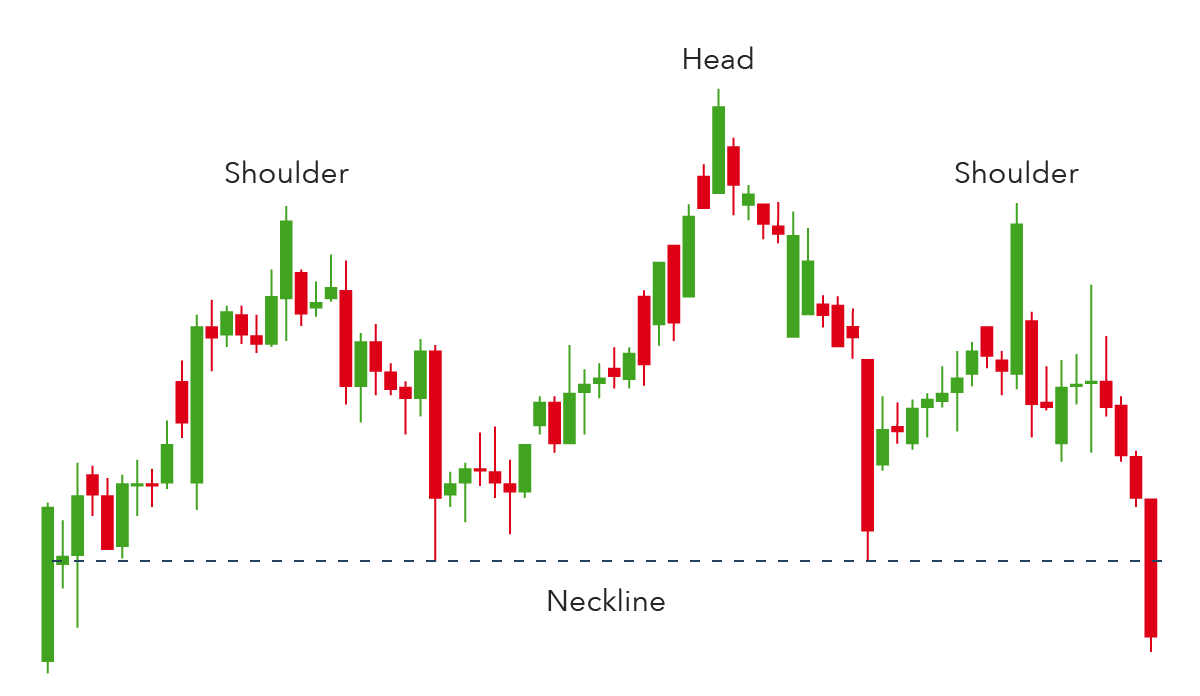
A double top is another pattern that traders use to highlight trend reversals. Typically, an asset’s price will experience a peak, before retracing back to a level of support. It will then climb up once more before reversing back more permanently against the prevailing trend.
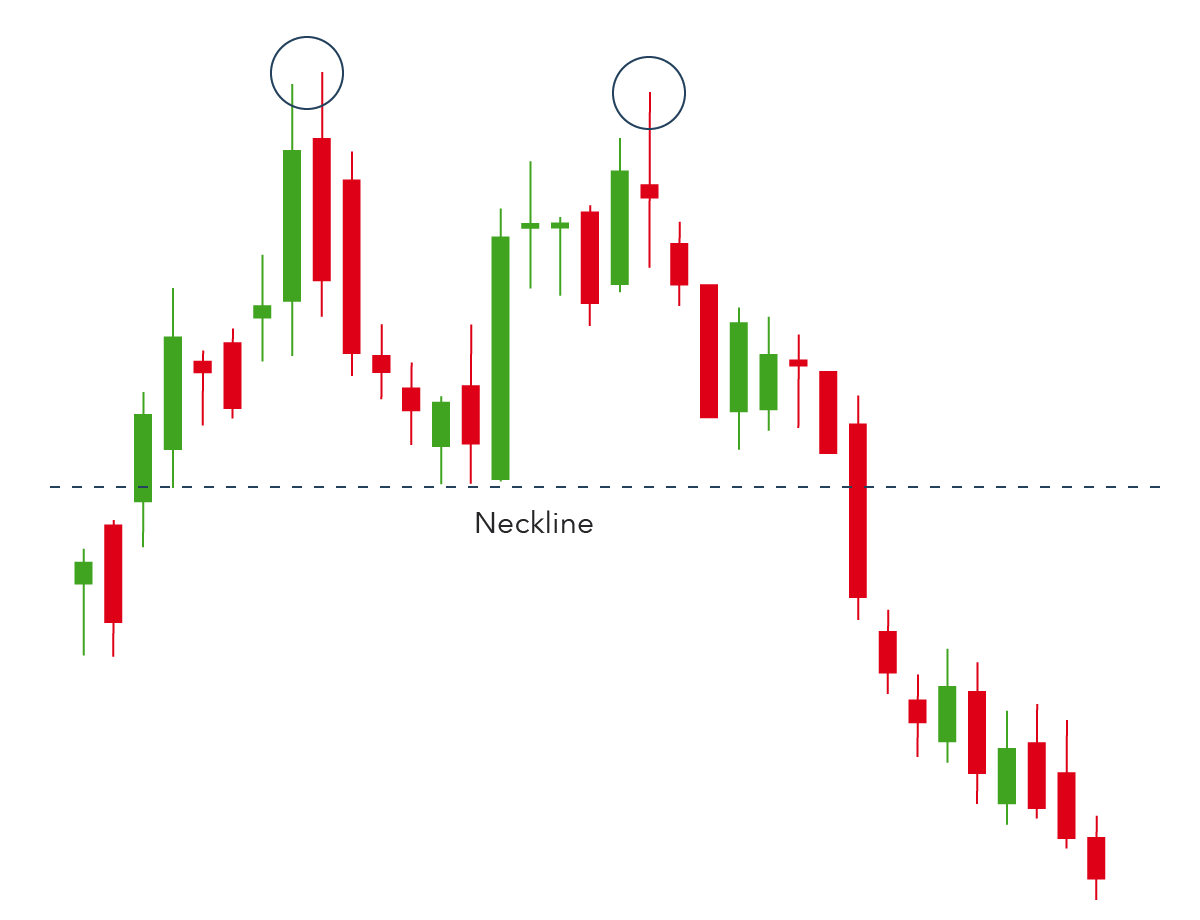
A double bottom chart pattern indicates a period of selling, causing an asset’s
price to drop below a level of support. It will then rise to a level of
resistance, before dropping again. Finally, the trend will reverse and begin an
upward motion as the market becomes more bullish.
A double bottom is a bullish reversal pattern, because it signifies the end of a
downtrend and a shift towards an uptrend.
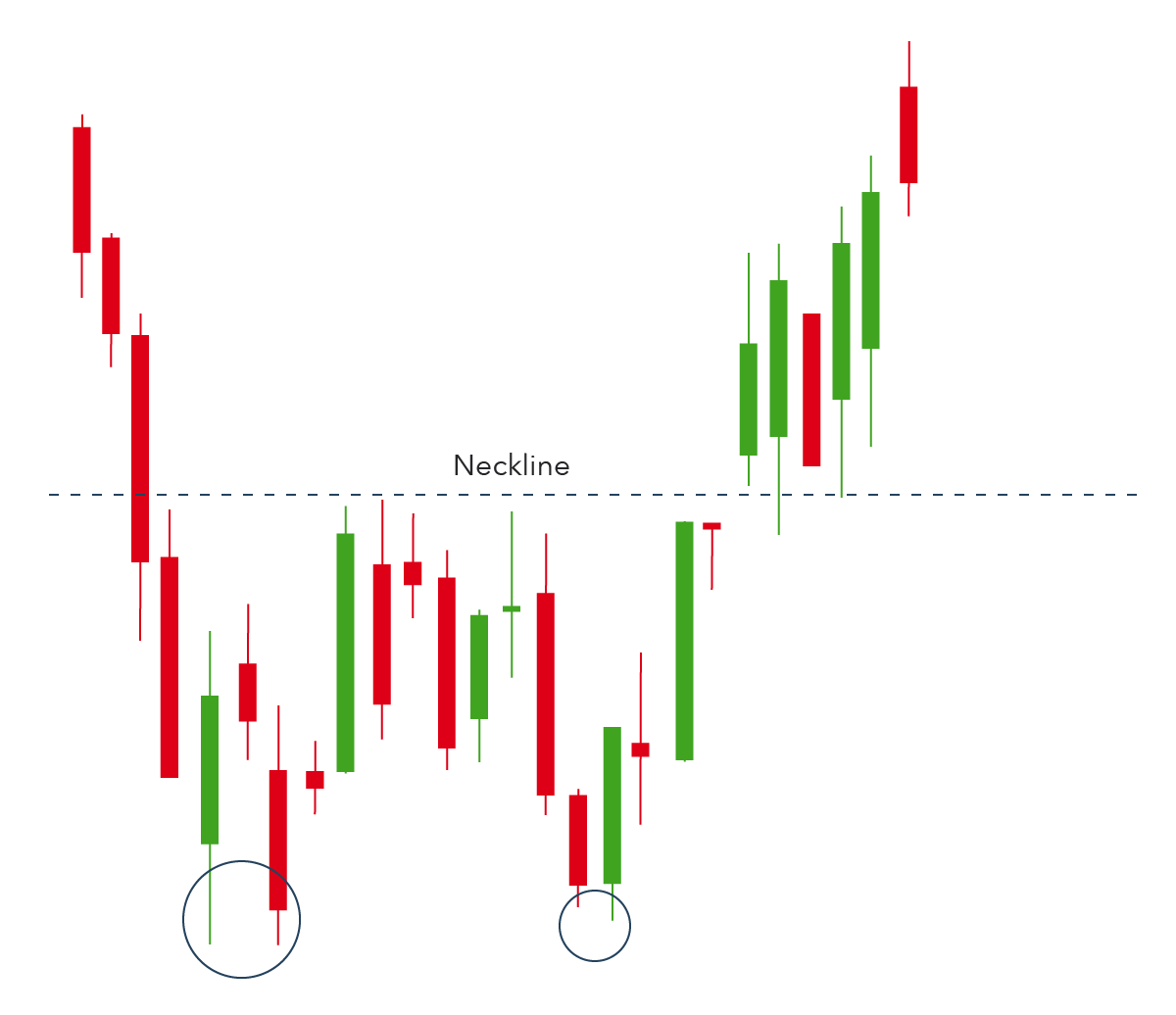
A rounding bottom chart pattern can signify a continuation or a reversal. For
instance, during an uptrend an asset’s price may fall back slightly before
rising once more. This would be a bullish continuation.
An example of a bullish reversal rounding bottom – shown below – would be if an
asset’s price was in a downward trend and a rounding bottom formed before the
trend reversed and entered a bullish uptrend.
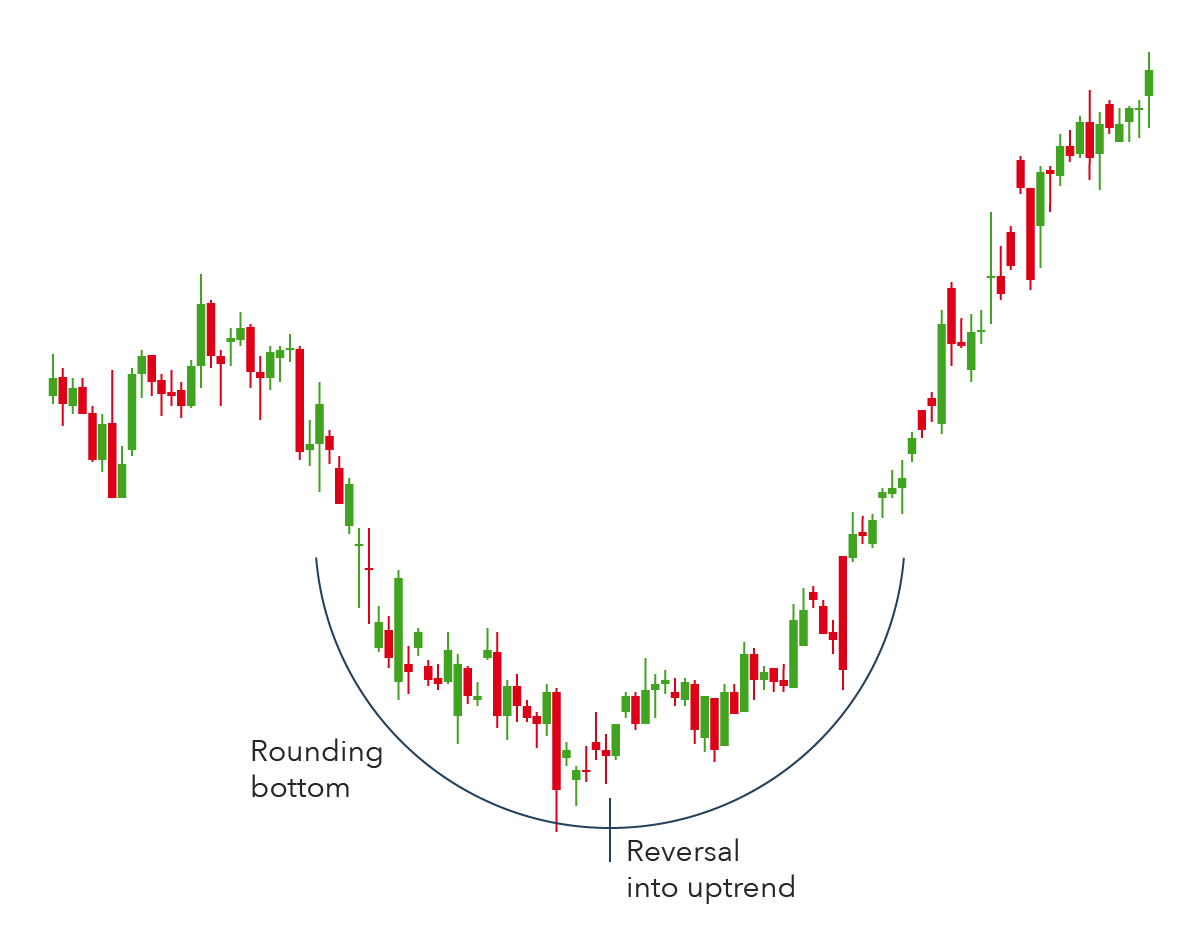
The cup and handle pattern is a bullish continuation pattern that is used to show
a period of bearish market sentiment before the overall trend finally continues
in a bullish motion. The cup appears similar to a rounding bottom chart pattern,
and the handle is similar to a wedge pattern – which is explained in the next
section.
Following the rounding bottom, the price of an asset will likely enter a
temporary retracement, which is known as the handle because this retracement is
confined to two parallel lines on the price graph. The asset will eventually
reverse out of the handle and continue with the overall bullish trend.
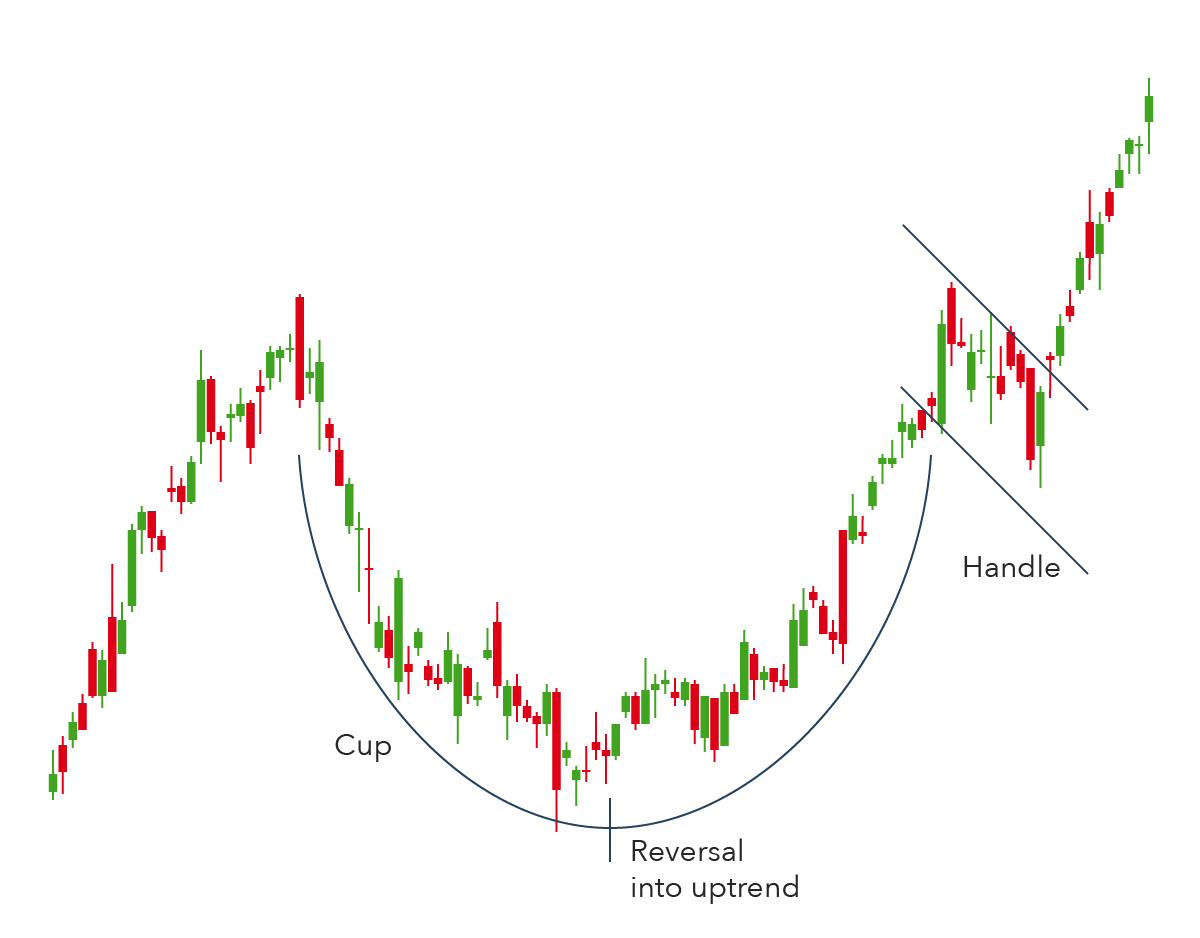
Wedges form as an asset’s price movements tighten between two sloping trend
lines. There are two types of wedge: rising and falling.
A rising wedge is represented by a trend line caught between two upwardly
slanted lines of support and resistance. In this case the line of support is
steeper than the resistance line. This pattern generally signals that an asset’s
price will eventually decline more permanently – which is demonstrated when it
breaks through the support level.
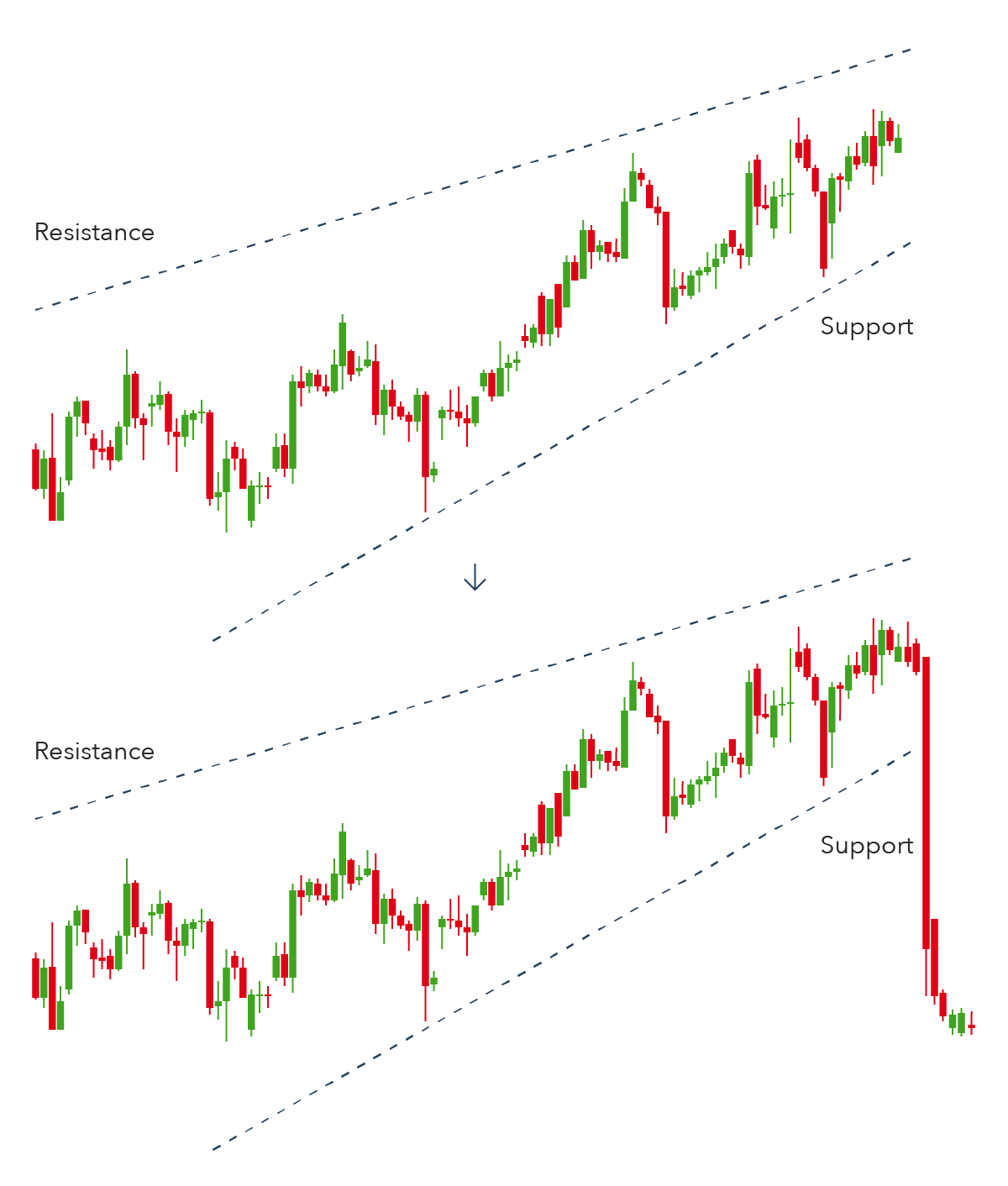
A falling wedge occurs between two downwardly sloping levels. In this case the line of resistance is steeper than the support. A falling wedge is usually indicative that an asset’s price will rise and break through the level of resistance, as shown in the example below.
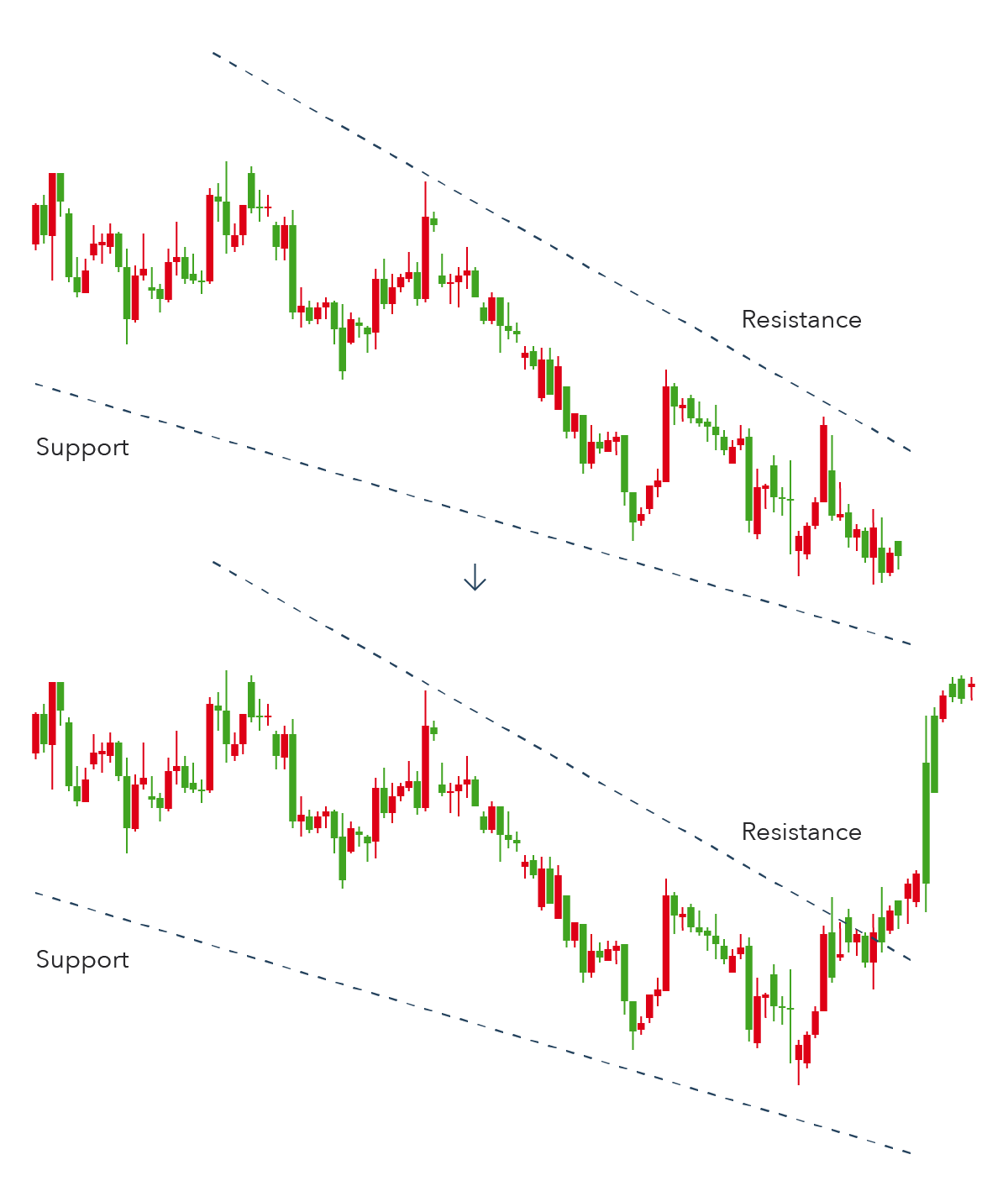
Both rising and falling wedges are reversal patterns, with rising wedges representing a bearish market and falling wedges being more typical of a bullish market.
Pennant patterns, or flags, are created after an asset experiences a period of
upward movement, followed by a consolidation. Generally, there will be a
significant increase during the early stages of the trend, before it enters into
a series of smaller upward and downward movements.
Following the rounding bottom, the price of an asset will likely enter a
temporary retracement, which is known as the handle because this retracement is
confined to two parallel lines on the price graph. The asset will eventually
reverse out of the handle and continue with the overall bullish trend.
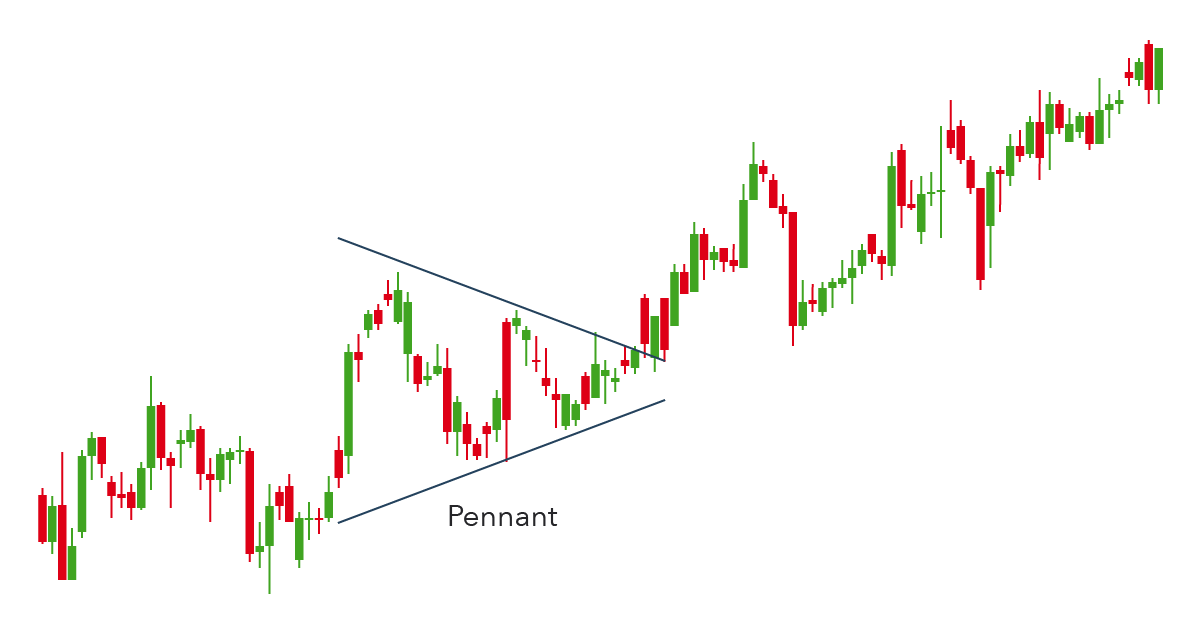
Pennants can be either bullish or bearish, and they can represent a continuation or a reversal. The above chart is an example of a bullish continuation. In this respect, pennants can be a form of bilateral pattern because they show either continuations or reversals. While a pennant may seem similar to a wedge pattern or a triangle pattern – explained in the next sections – it is important to note that wedges are narrower than pennants or triangles. Also, wedges differ from pennants because a wedge is always ascending or descending, while a pennant is always horizontal.
The ascending triangle is a bullish continuation pattern which signifies the continuation of an uptrend. Ascending triangles can be drawn onto charts by placing a horizontal line along the swing highs – the resistance – and then drawing an ascending trend line along the swing lows – the support.
Ascending triangles often have two or more identical peak highs which allow for the horizontal line to be drawn. The trend line signifies the overall uptrend of the pattern, while the horizontal line indicates the historic level of resistance for that particular asset.
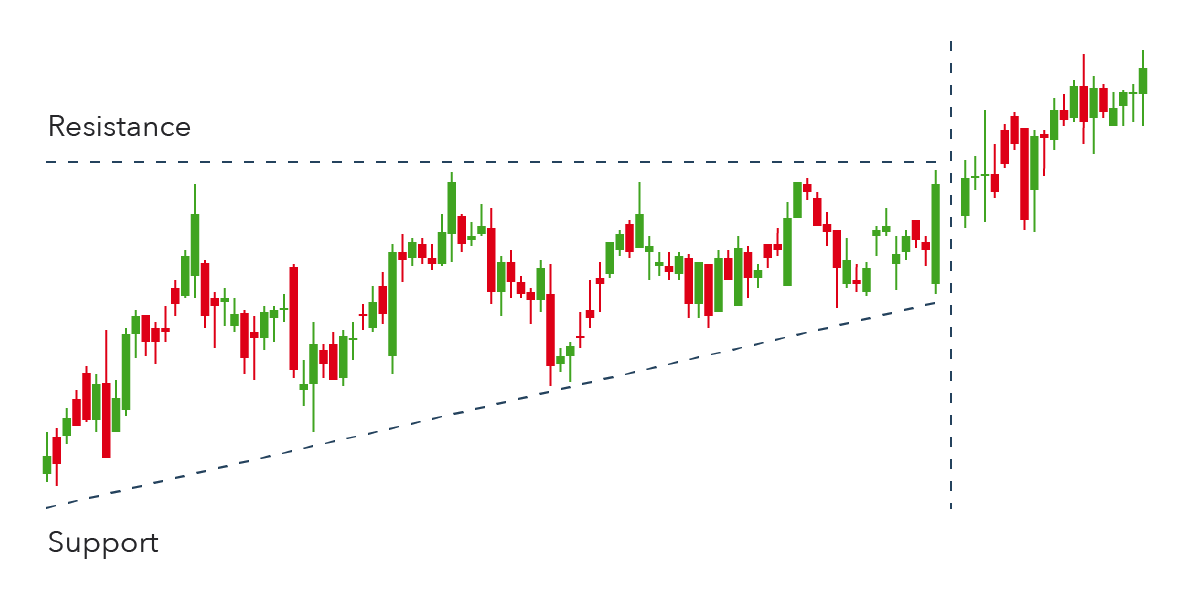
In contrast, a descending triangle signifies a bearish continuation of a downtrend. Typically, a trader will enter a short position during a descending triangle – possibly with CFDs – in an attempt to profit from a falling market.
Descending triangles generally shift lower and break through the support because
they are indicative of a market dominated by sellers, meaning that successively
lower peaks are likely to be prevalent and unlikely to reverse.
Descending triangles can be identified from a horizontal line of support and a
downward-sloping line of resistance. Eventually, the trend will break through
the support and the downtrend will continue.
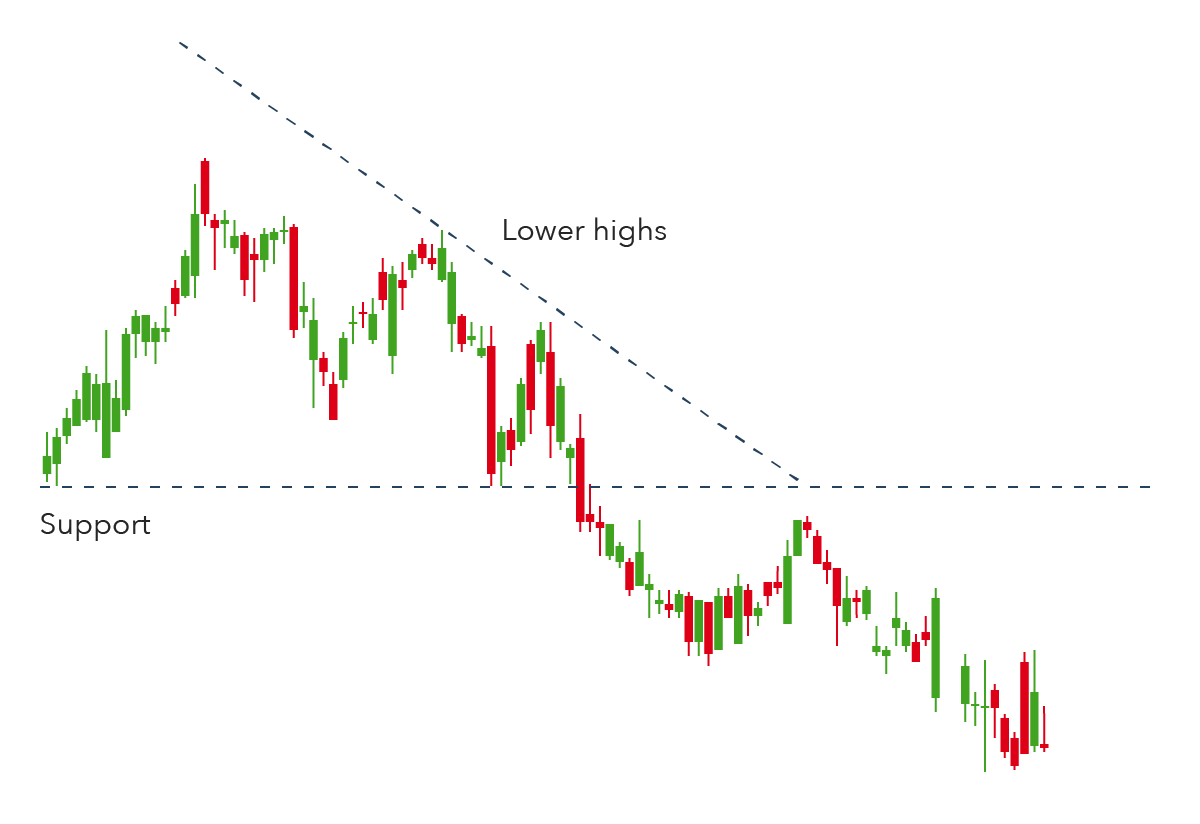
The symmetrical triangle pattern can be either bullish or bearish, depending on
the market. In either case, it is normally a continuation pattern, which means
the market will usually continue in the same direction as the overall trend once
the pattern has formed.
Symmetrical triangles form when the price converges with a series of lower peaks
and higher troughs. In the example below, the overall trend is bearish, but the
symmetrical triangle shows us that there has been a brief period of upward
reversals.
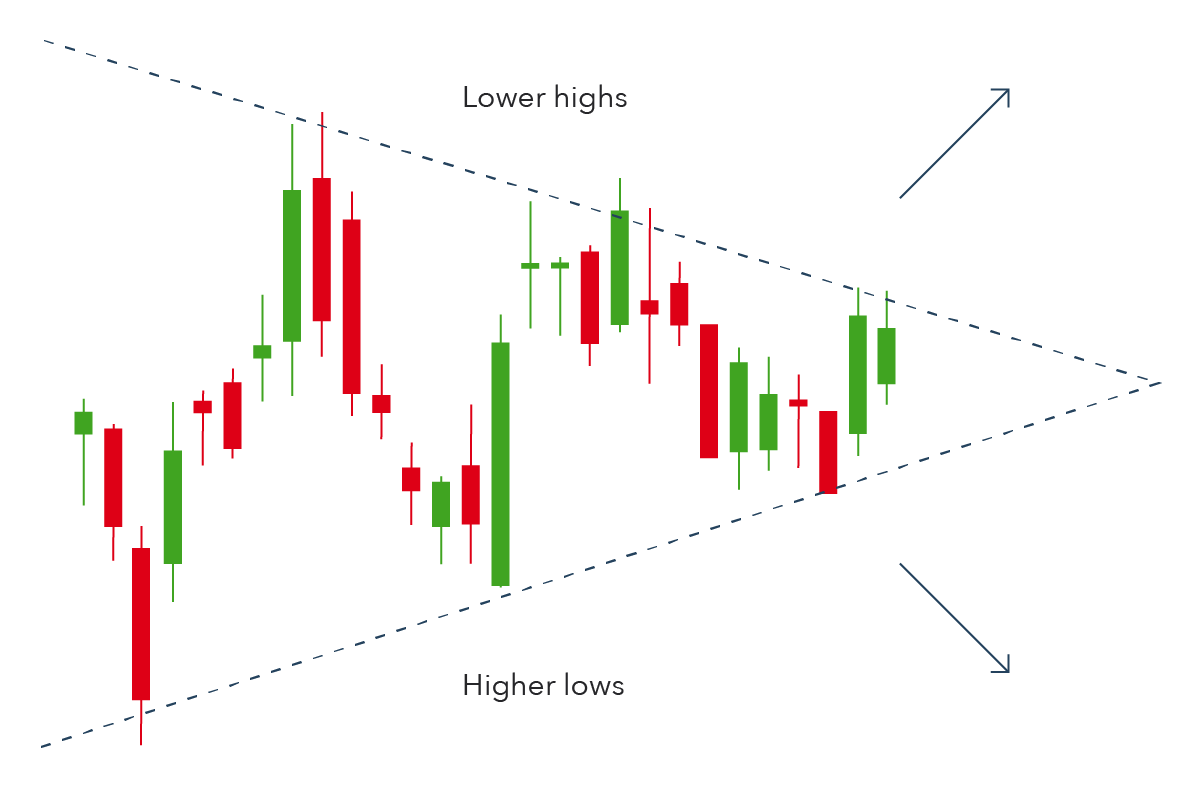
However, if there is no clear trend before the triangle pattern forms, the market could break out in either direction. This makes symmetrical triangles a bilateral pattern – meaning they are best used in volatile markets where there is no clear indication of which way an asset’s price might move. An example of a bilateral symmetrical triangle can be seen below.
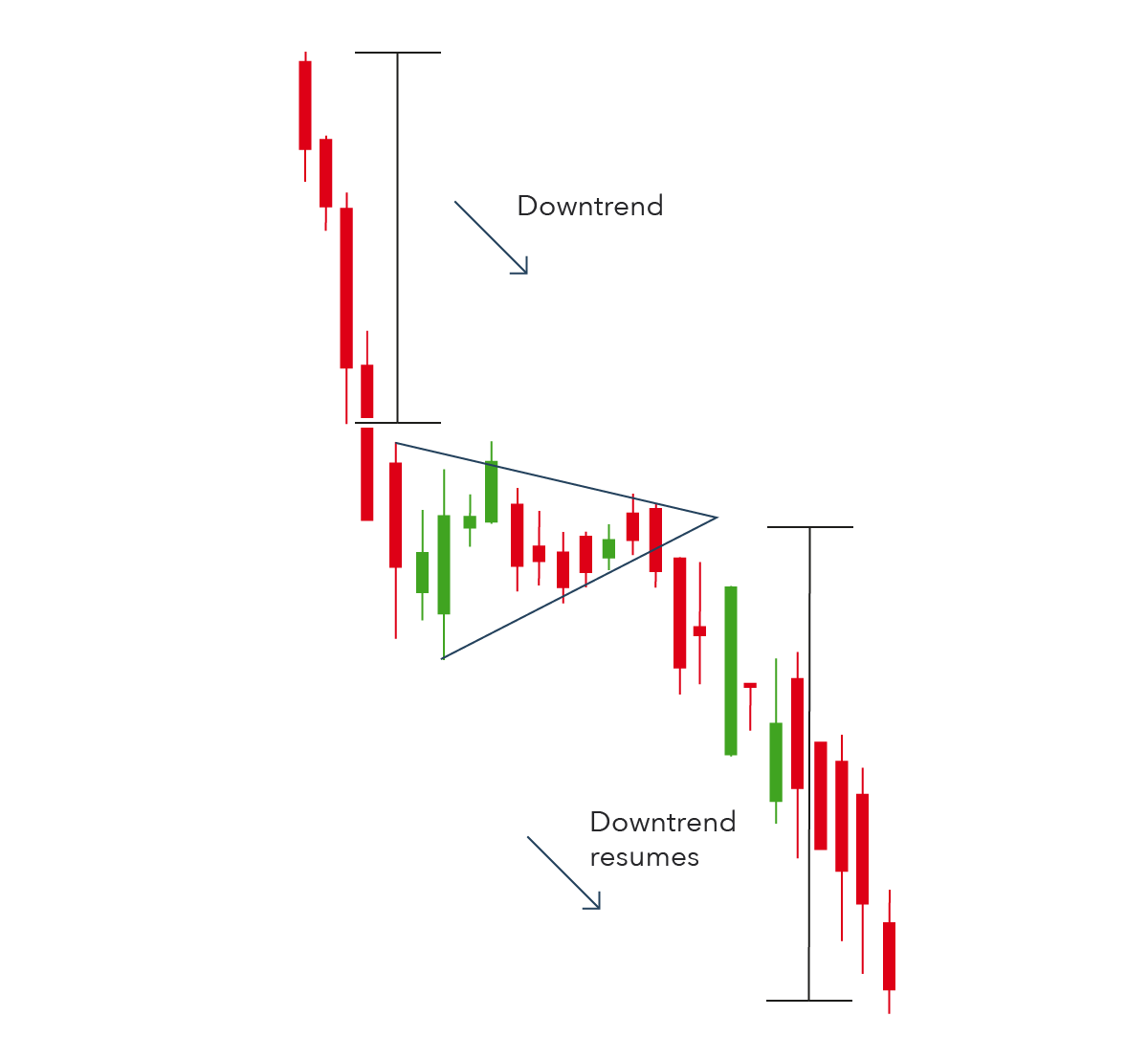
All of the patterns explained in this article are useful technical indicators which can help you to understand how or why an asset’s price moved in a certain way – and which way it might move in the future. This is because chart patterns are capable of highlighting areas of support and resistance, which can help a trader decide whether they should open a long or short position; or whether they should close out their open positions in the event of a possible trend reversal.
